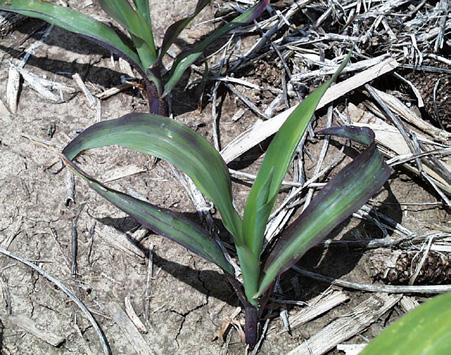
Jan 6, 2020, 2:00 PM
Fallow Syndrome Following Prevent Plant
Many acres across the corn belt were too wet to plant in the spring of 2019. Because of this, the fields that were supposed to produce a row crop and possibly have a fertilizer application sat dormant and unproductive. Often when this happens, the following year’s crop can show signs of nutrient deficiency and reduced yield, even if that crop is planted in a timely fashion and has the full season to grow. This condition is known as Fallow Syndrome.
Factors to Consider
- Mycorrhiza and other biologicals: Fallow Syndrome is most often associated with a reduction in beneficial soil biologicals, specifically, a fungal biological known as mycorrhiza. The mycorrhizae interact with the nutrients in the soil to cause them to be more available to the plant. They also act as a conduit to channel those nutrients to the plant root. When soil has been saturated and there hasn’t been a host crop to maintain mycorrhizal development, the crop the following year can’t utilize the mycorrhizae to assist its nutrient uptake.
- Fertility levels: If soils have a low to medium fertility level, then it can be difficult for positively charged nutrients, such as phosphorus and zinc, to be intercepted by the root, especially if there is a reduction in mycorrhizae. The most common deficiencies seen are phosphorus and zinc. However, if you have high soil test values before you go into a fallow year, then the saturation of nutrients will most likely to be high enough for root interception, even with reduced beneficial soil biologicals in the soil.
 |
| Corn plant showing purpling of leaves and stunted growth typical of Fallow Syndrome. Photo Credit: SDSU Extension |
Action Plan
- It is best to plant a cover crop on prevent plant acres so that there is a green bridge of plants and roots for mycorrhizae to colonize and keep their populations high throughout the fallow season. The best cover crops are grasses or legumes. If brassicas (turnips, radishes) are desired for their soil penetration, then mixing in some grasses and legumes would be a good idea. Brassicas don’t develop as strong a symbiotic relationship with mycorrhizae. [1][3]
- Some of the effects of Fallow Syndrome can be mitigated if readily available fertilizer starters, such as an ortho-phosphorus, can be applied in furrow or in a band at planting. Applying broadcast fertilizers takes significant time to breakdown and become available to the plant and will not help the crop that is being grown the season after a fallow year. [1][2]
- Consider planting soybeans if you were unable to get a cover crop in and if you know that your soil tests are on the low side. Soybeans are not immune to Fallow Syndrome, but they generally will outperform corn on soil that is significantly affected. [1][3]
- Consider applying a biological treatment such as Envita®, Nutriquire™, or SoyFx™ to the crop following a fallow year. Biological amendments are likely to help repopulate the soil, especially in the root zone, with positive symbiotic bacteria and fungi. This could help to mitigate the effects of Fallow Syndrome.
Summary
In the season following a prevent plant year it is possible to have nutrient uptake deficiencies that are known as Fallow Syndrome. In order to mitigate this situation, growers should try to plant an appropriate cover crop mix that will help soil biology be prepared for the crop that they intend to plant in the following year. The grower should also take into account what soil test levels the field had before they plant the next crop. They may need to adjust their fertility plan and possibly their crop rotation accordingly.
Resources
[1] Stunted Corn Following Prevent Planting – Fallow Syndrome, University of Missouri, Gregory A. Luce, https://ipm.missouri.edu/cropPest/2016/6/Stunted_Corn_Following_Prevented_Planting-Fallow_Syndrome/
[2] Fallow Syndrome: What is it and how do I deal with it?, South Dakota State University, Jason Clark,
https://extension.sdstate.edu/fallow-syndrome-what-it-and-how-do-i-deal-it
[3] Cover crop options for prevent plant acres and drowned-out areas, University of Minnesota, Anna Cates,
Liz Stahl, and Phyllis Bongard, https://blog-crop-news.extension.umn.edu/2019/06/cover-crop-options-for-prevent-plant.html

